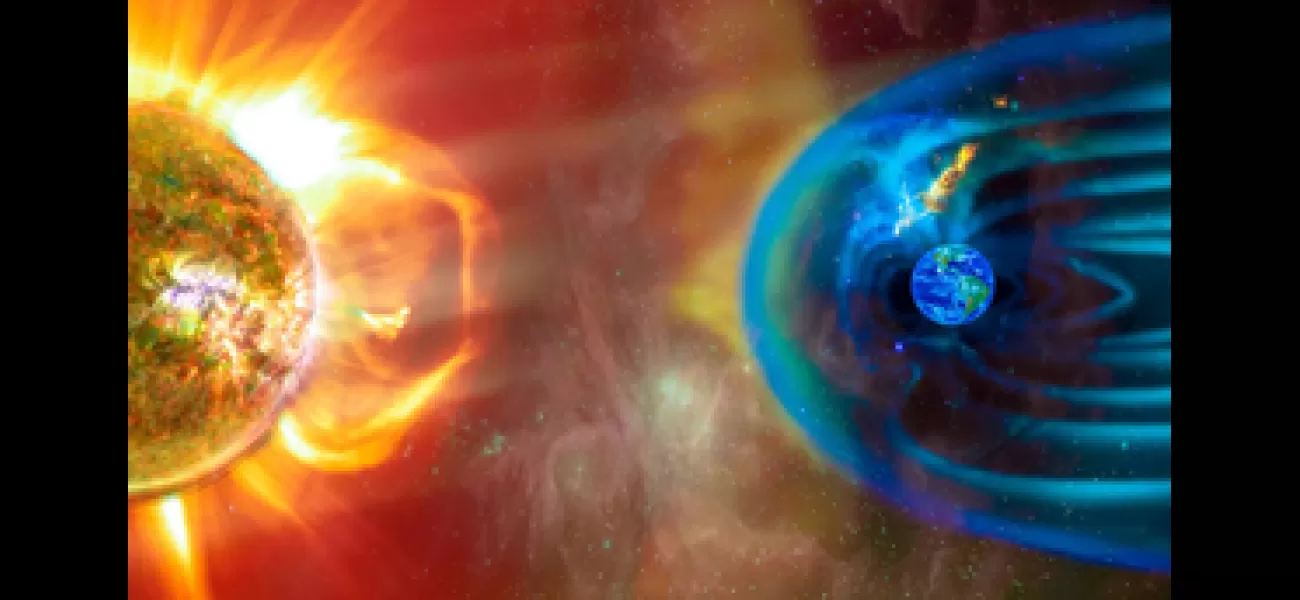NOAA predicts that Earth will experience geomagnetic storms until Sunday night.
Geomagnetic storms are disrupting technology and are predicted to continue until Sunday night, according to NOAA's SWPC.
May 12th 2024.

Over the weekend, the Earth was hit by powerful geomagnetic storms that caused disruptions in technologies such as GPS, satellite navigation, and others. According to the US National Oceanic and Atmospheric Administration (NOAA), these storms are expected to continue until Sunday night.
The Space Weather Prediction Center, a branch of NOAA, has classified the geomagnetic storm as "extreme" or a G5 storm, which is the highest level on the scale. This is the first time a G5 storm has hit Earth since 2003 and it has resulted in multiple coronal mass ejections (CMEs).
Aside from giving skygazers around the world a chance to see the stunning northern lights in places they don't typically appear, the storm has also caused major disturbances in Earth's magnetic field. This has led to radio blackouts and affected technologies like GPS and Elon Musk's Starlink satellite system. In a post on X.com, NOAA stated that geomagnetic storming of varying intensity will continue overnight.
According to NOAA, the next major coronal mass ejection will occur early Sunday and continue into Sunday night. This CME will be moving at speeds of up to 1800 kilometers per second and will impact Earth's magnetic field and outer atmosphere. A G4 Watch will remain in effect for May 12.
But what exactly is a geomagnetic storm? It is described as a disturbance in the Earth's magnetosphere caused by solar wind activity. These storms can cause beautiful auroras in the sky, but they can also result in disruptions in satellite communications. On the G1 to G5 scale, G5 is considered the strongest level of geomagnetic storm.
NOAA has warned that the current G5 storm may cause widespread voltage control problems and protective system issues. Some grid systems may even experience blackouts or complete collapse. Transformers may also sustain damage. The last G4 storm occurred on March 23, 2024, and the last G5 event was the Halloween Storms in October 2003. The G5 storm in 2003 caused power outages in Sweden and damaged transformers in South Africa.
Experts have noted that as the sun approaches its peak in the 11-year solar activity cycle, which is expected to occur in 2025, we can expect to see more frequent geomagnetic storms. This means we will need to be prepared for the potential disruptions they may cause.
The Space Weather Prediction Center, a branch of NOAA, has classified the geomagnetic storm as "extreme" or a G5 storm, which is the highest level on the scale. This is the first time a G5 storm has hit Earth since 2003 and it has resulted in multiple coronal mass ejections (CMEs).
Aside from giving skygazers around the world a chance to see the stunning northern lights in places they don't typically appear, the storm has also caused major disturbances in Earth's magnetic field. This has led to radio blackouts and affected technologies like GPS and Elon Musk's Starlink satellite system. In a post on X.com, NOAA stated that geomagnetic storming of varying intensity will continue overnight.
According to NOAA, the next major coronal mass ejection will occur early Sunday and continue into Sunday night. This CME will be moving at speeds of up to 1800 kilometers per second and will impact Earth's magnetic field and outer atmosphere. A G4 Watch will remain in effect for May 12.
But what exactly is a geomagnetic storm? It is described as a disturbance in the Earth's magnetosphere caused by solar wind activity. These storms can cause beautiful auroras in the sky, but they can also result in disruptions in satellite communications. On the G1 to G5 scale, G5 is considered the strongest level of geomagnetic storm.
NOAA has warned that the current G5 storm may cause widespread voltage control problems and protective system issues. Some grid systems may even experience blackouts or complete collapse. Transformers may also sustain damage. The last G4 storm occurred on March 23, 2024, and the last G5 event was the Halloween Storms in October 2003. The G5 storm in 2003 caused power outages in Sweden and damaged transformers in South Africa.
Experts have noted that as the sun approaches its peak in the 11-year solar activity cycle, which is expected to occur in 2025, we can expect to see more frequent geomagnetic storms. This means we will need to be prepared for the potential disruptions they may cause.
[This article has been trending online recently and has been generated with AI. Your feed is customized.]
[Generative AI is experimental.]
0
0
Submit Comment





